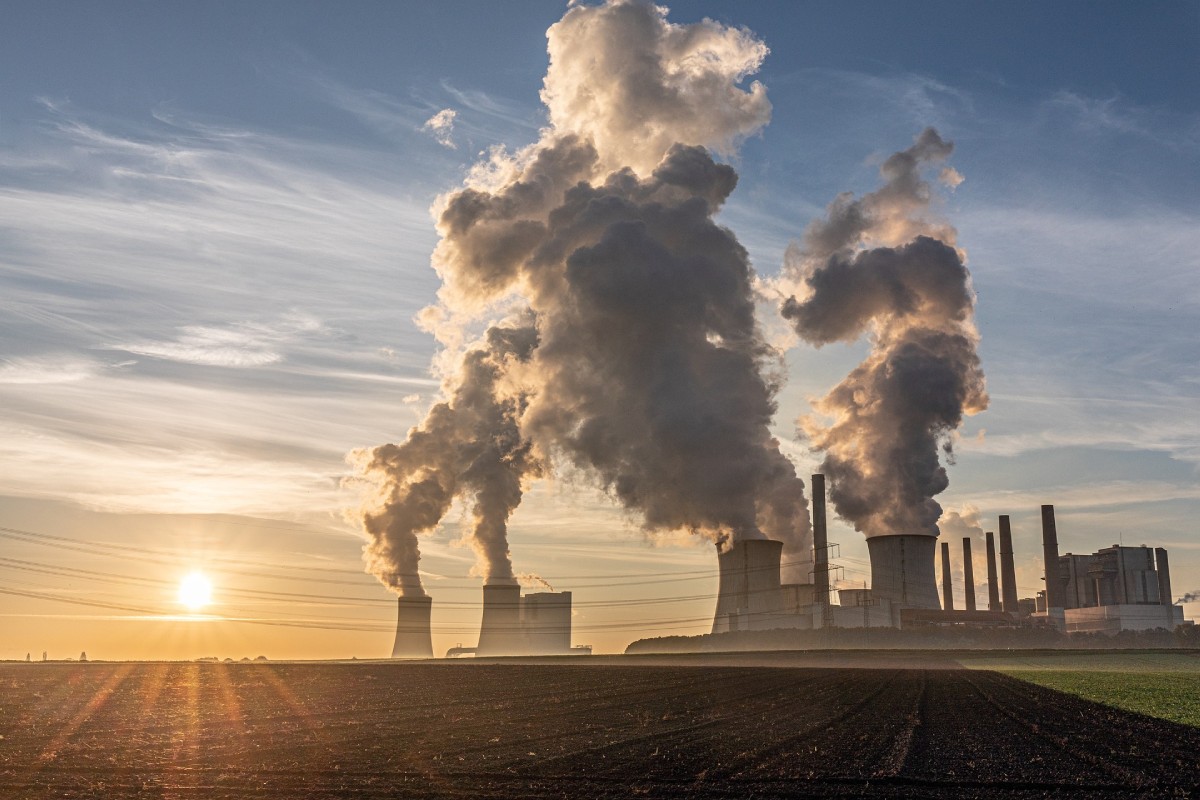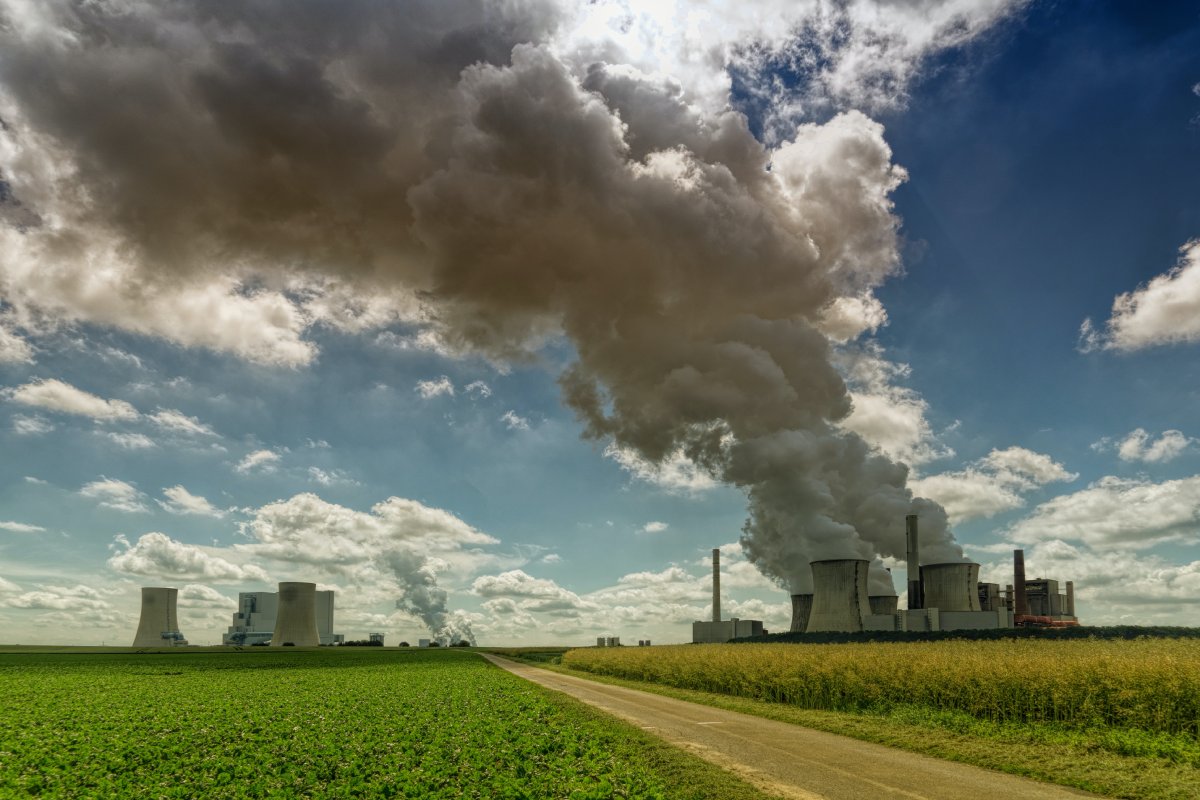Introduction
In our world today, the issue of air pollution looms large, presenting a growing concern for human health, our environment, and the well-being of our planet. In the quest for sustainable solutions, we find that improving indoor and outdoor air quality is more urgent than ever.
The Growing Concern of Air Pollution
Air pollution, once seen as an unavoidable byproduct of industrial progress, is now understood as an urgent problem requiring effective and sustainable solutions. No longer confined to smog-covered cities or industrial areas, air pollution pervades our homes, schools, workplaces, and even the seemingly clean rural spaces. A mix of particulates, chemicals, and biological materials, it doesn’t just cloud our skies; it clouds our future.
Health and Environmental Impacts
The toll of air pollution on health is severe and well-documented. It’s linked to heart disease, respiratory issues, allergies, and even cancer. Children, elderly individuals, and those with existing health conditions are particularly vulnerable. But humans aren’t the only victims. Our environment suffers too, with polluted air contributing to climate change, damaging crops, and harming wildlife.
Overview of the Blog Post
In this blog post, we’ll delve into sustainable solutions to tackle air pollution. We’ll explore the ways to improve indoor and outdoor air quality, investigate technological innovations, and look at policy initiatives aimed at clean air. We’ll also highlight the role each one of us can play in this mission.
By discussing the problem of air pollution and its impact, we aim to shed light on the various sustainable solutions available to us. In the process, we hope to encourage action towards cleaner air and a healthier planet. The fight against air pollution is a collective responsibility, one that promises a breath of fresh air for all.
Understanding Air Pollution
As we delve deeper into the topic of air pollution, it’s important to understand what it entails. Air pollution isn’t a singular entity but a mix of various pollutants from diverse sources. Its effects aren’t uniform either, with global distribution revealing striking inequalities. Let’s shed some light on these aspects.

Different Types of Air Pollutants
Air pollution consists of various types of pollutants, each with unique characteristics and impacts. Particulate matter (PM), tiny particles suspended in the air, is one of the most harmful. These particles, especially PM2.5 and PM10, are small enough to enter the respiratory system, leading to various health issues.
Gaseous pollutants like carbon monoxide, sulfur dioxide, and nitrogen oxides also pose severe health risks. They can originate from natural sources, such as volcanic eruptions, or human activities like burning fossil fuels. Volatile organic compounds (VOCs), a variety of carbon-based chemicals, can be harmful or even toxic.
Another significant component of air pollution is ground-level ozone. Unlike the beneficial ozone in the upper atmosphere that shields us from harmful ultraviolet rays, ground-level ozone poses health risks. It forms when sunlight reacts with pollutants like VOCs and nitrogen oxides.
Primary Sources of Air Pollution
Air pollution comes from various sources, both natural and human-induced. Natural sources include dust storms, wildfires, and volcanic eruptions. However, human activities contribute the most to air pollution.
Industrial processes, energy production, and vehicle emissions are among the leading sources. Agriculture, including livestock and crop burning, also contributes significantly. Furthermore, everyday activities like cooking, heating, and using certain products can release pollutants indoors, leading to poor indoor air quality.
Global Distribution and Inequality in Air Pollution
Air pollution doesn’t affect all regions equally. Highly industrialized regions and densely populated urban areas often face higher pollution levels. Yet, developing countries bear a disproportionate burden of air pollution and its impacts.
Furthermore, within cities, air pollution can vary greatly. Factors like proximity to pollution sources, local weather patterns, and urban design can influence air quality. Often, underprivileged communities live in areas with higher pollution levels, leading to environmental justice concerns.
In understanding air pollution, we must consider these different facets. Only then can we devise effective, inclusive, and sustainable solutions to improve air quality, both indoors and outdoors.
Indoor Air Pollution: An Overlooked Problem
While outdoor air pollution often garners more attention, indoor air quality is an equally critical, albeit frequently overlooked, issue. The indoor environments where people spend a significant portion of their time can host various pollutants, posing serious health risks. Here, we delve into the common sources of indoor air pollution, its associated health risks, and strategies for improvement.
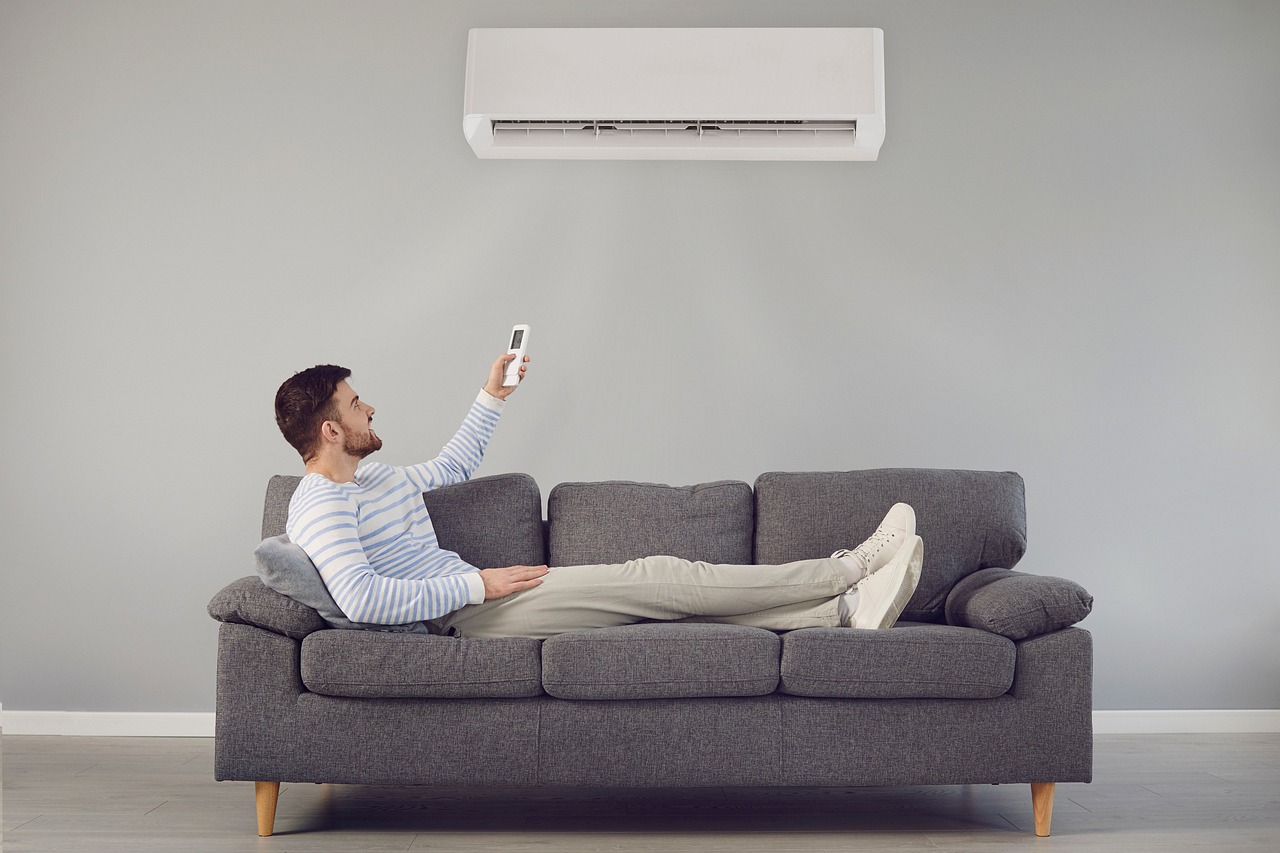
Common Sources of Indoor Air Pollution
Indoor air pollution can originate from a myriad of sources. Combustion sources such as tobacco, wood or coal stoves, fireplaces, and gas heaters can release harmful pollutants like carbon monoxide, nitrogen oxides, and particulate matter.
Household products and materials, including cleaning supplies, air fresheners, paint, and pressed-wood furniture, can emit volatile organic compounds (VOCs). In addition, mold and pollen can contribute to indoor air pollution, especially in damp or poorly ventilated spaces.
Moreover, indoor air can also be contaminated by outdoor pollutants that infiltrate the home, such as vehicle exhaust or industrial emissions.
Health Risks Associated with Indoor Air Pollution
Exposure to indoor air pollutants can lead to a range of health effects. Immediate effects can include irritation of the eyes, nose, and throat, headaches, dizziness, and fatigue. These are usually short-term and treatable.
Long-term exposure, however, can lead to respiratory diseases, heart disease, and even cancer. The elderly, children, and those with pre-existing health conditions are particularly vulnerable. Furthermore, specific indoor pollutants, like radon and secondhand smoke, are known carcinogens.
Strategies for Improving Indoor Air Quality
Improving indoor air quality involves reducing pollutant sources, improving ventilation, and cleaning the indoor air. Source control is often the most effective strategy. This can involve choosing household products with lower emissions, maintaining combustion appliances to reduce their emissions, and prohibiting indoor smoking.
Ventilation improvements can also significantly improve indoor air quality by reducing the concentration of pollutants. This can be as simple as opening windows to allow fresh air in or using exhaust fans in kitchens and bathrooms.
For some pollutants, like radon, specialized mitigation methods may be necessary. In other cases, air cleaners can be useful, especially for reducing particulate matter. However, not all air cleaners are equally effective against all pollutants, so it’s essential to choose carefully based on the specific indoor air quality concerns in your home.
Taking these steps can greatly improve indoor air quality, enhancing health and well-being for all occupants. Indoor air pollution may be an overlooked problem, but it is one that we can effectively address with awareness, action, and sustainable strategies.
Outdoor Air Pollution: A Public Health Hazard
Outdoor air pollution is a persistent public health concern affecting communities worldwide. It originates from numerous sources and significantly impacts our environment, posing health risks and exacerbating climate change. This section aims to dissect the key contributors to outdoor air pollution, its environmental implications, and strategies for reducing it.
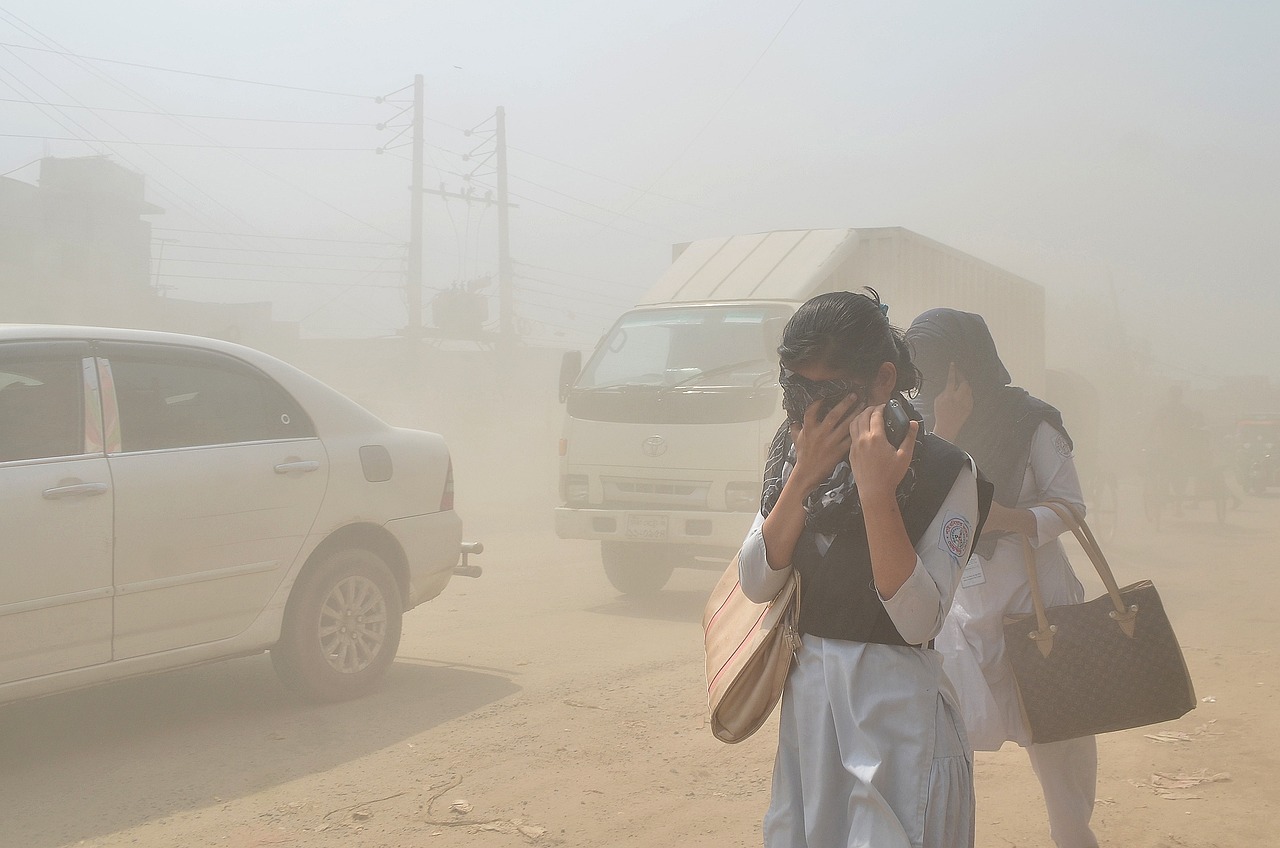
Key Contributors to Outdoor Air Pollution
Several sources contribute to outdoor air pollution, the majority stemming from human activities. Transportation is a significant culprit, with cars, trucks, airplanes, and ships emitting a variety of pollutants, including nitrogen oxides, particulate matter, and carbon monoxide.
Industry and power generation also contribute substantially, especially in areas where coal is a major source of power. Agricultural practices, such as the use of synthetic fertilizers and burning of agricultural residues, release harmful pollutants into the air.
Outdoor air pollution can also have natural sources like volcanoes, wildfires, and dust storms, which release particulate matter and various gases into the atmosphere.
Environmental Consequences of Outdoor Air Pollution
The environmental impacts of outdoor air pollution are multifaceted. It can result in the formation of acid rain, which harms vegetation, soil, and aquatic ecosystems. Pollutants like ozone can damage crops and other plants, impacting agriculture and natural ecosystems.
Moreover, many air pollutants contribute to climate change. For instance, carbon dioxide from burning fossil fuels is a major driver of global warming. Particulate matter can also impact climate by affecting the amount of sunlight that reaches the Earth’s surface.
Strategies for Reducing Outdoor Air Pollution
Tackling outdoor air pollution requires a multifaceted approach. At the heart of it is the transition to cleaner energy sources. This can involve shifting from coal to natural gas for power generation, investing in renewable energy technologies like wind and solar, and promoting the use of electric vehicles.
Improvements in energy efficiency can also help reduce emissions from power generation and transportation. This can range from improving fuel economy in vehicles to implementing energy-saving measures in buildings.
Regulations and policies play a crucial role too. Enforcing stricter emission standards, incentivizing cleaner practices, and investing in public transportation can significantly reduce outdoor air pollution.
Individual actions also matter. Reducing car use, using energy-efficient appliances, and supporting clean energy are ways individuals can contribute.
Outdoor air pollution is a complex problem, but by understanding its sources and impacts, we can develop and implement strategies to mitigate it. As individuals, communities, and nations, we have the power to improve our air quality and, consequently, our health and the health of our planet.
Role of Industry in Air Pollution
Industries play a substantial role in air pollution, emitting a wide range of pollutants that harm air quality both indoors and outdoors. This section aims to discuss major industrial contributors to air pollution, the regulations and standards set to manage these emissions, and opportunities for industries to mitigate their environmental impact.
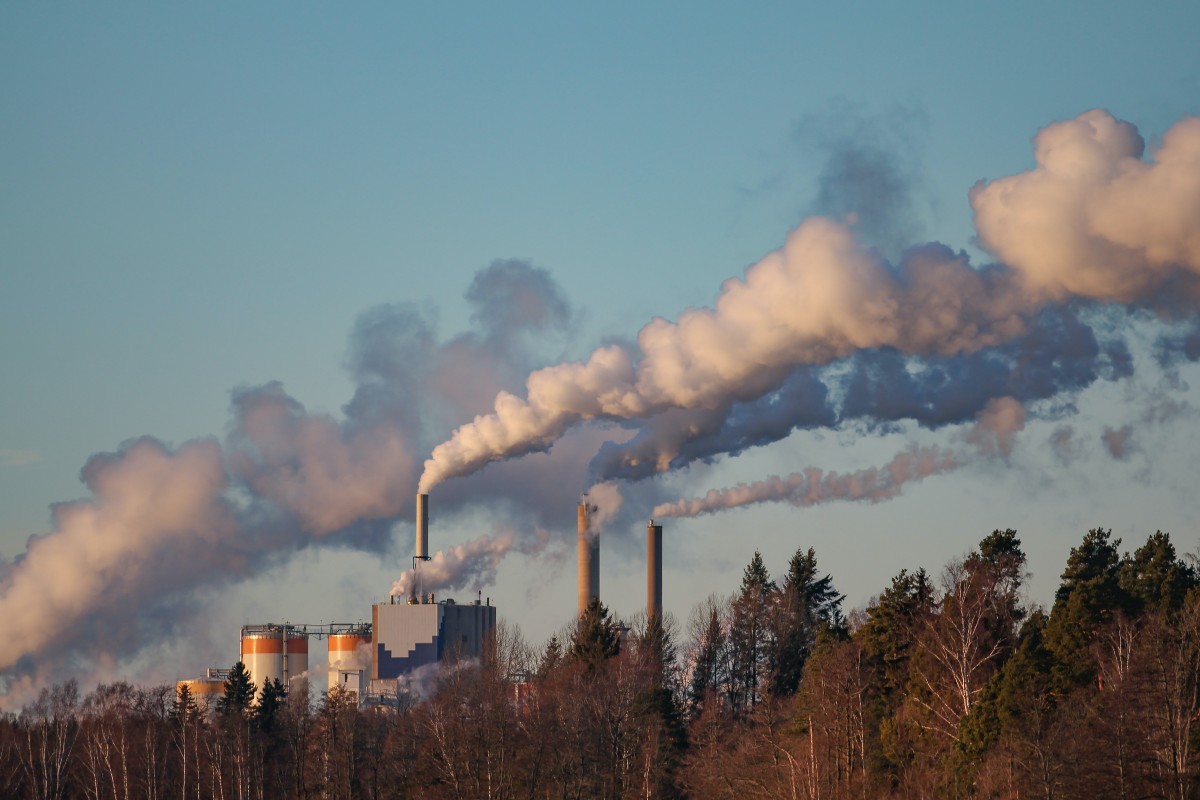
Major Industrial Contributors to Air Pollution
Various industries contribute significantly to air pollution. The power generation industry, especially those utilizing coal and natural gas, emit sulfur dioxide, nitrogen oxides, and particulate matter. Manufacturing industries, such as chemical, metal, and cement manufacturing, release a plethora of pollutants, including volatile organic compounds, heavy metals, and carbon monoxide.
The oil and gas industry is also a major contributor, with emissions from extraction, refining, and burning of fossil fuels. These processes release pollutants such as methane, a potent greenhouse gas, and various volatile organic compounds.
Regulations and Standards for Industrial Emissions
Governments worldwide have implemented regulations and standards to control industrial emissions. These may include emission standards, limiting the amount of specific pollutants that can be released, and technology requirements, mandating the use of certain pollution control technologies.
In many countries, industries are also subject to permit systems, where they must obtain a permit outlining their allowed emissions and the measures they’ll take to control pollution. Violations can result in fines and other penalties, providing a financial incentive for industries to comply.
Opportunities for Industrial Improvements
Despite the challenges, there are numerous opportunities for industries to reduce their contributions to air pollution. Investing in cleaner technologies can lead to significant emission reductions. For example, scrubbers can reduce sulfur dioxide emissions from power plants, while advanced catalysts can reduce emissions from chemical reactions.
Energy efficiency improvements can also lead to emission reductions by reducing fuel use. This could involve optimizing industrial processes or investing in more energy-efficient machinery and equipment.
The adoption of circular economy principles – designing out waste, keeping products and materials in use, and regenerating natural systems – can also mitigate industrial pollution. For instance, recycling and reusing waste materials can reduce the need for new production and associated emissions.
Ultimately, the industrial sector has a significant role to play in combating air pollution. Through a combination of regulatory compliance, technological advancements, and sustainable practices, industries can help improve air quality, benefiting public health and the environment.
Transportation and Air Quality
Transportation plays a crucial role in air quality, with vehicle emissions being a significant contributor to both indoor and outdoor air pollution. In this section, we delve into the impact of vehicle emissions on air quality, discuss sustainable alternatives such as public transport, cycling, and walking, and explore the rise of electric vehicles.

Impact of Vehicle Emissions on Air Quality
Motor vehicles release a wide array of pollutants, including nitrogen oxides, particulate matter, and volatile organic compounds. These pollutants not only degrade outdoor air quality but also infiltrate indoor environments, contributing to poor indoor air quality. High-traffic areas often suffer the most, with pollution levels far exceeding safe limits, posing severe health risks and environmental harm.
Public Transport, Cycling, and Walking as Sustainable Alternatives
Promoting more sustainable modes of transportation can significantly reduce vehicle emissions. Public transportation, for instance, can move large numbers of people efficiently, reducing the number of individual vehicles on the road. Investments in public transit infrastructure can make this option more attractive, reliable, and accessible.
Active transportation modes such as walking and cycling can also contribute to improving air quality. These methods of travel produce no emissions, promote physical health, and reduce traffic congestion. Proper infrastructure such as cycle lanes and pedestrian-friendly streets are essential to encourage these practices.
The Rise of Electric Vehicles
Electric vehicles (EVs) are on the rise as a promising solution to air pollution from transportation. Unlike conventional vehicles, EVs produce no tailpipe emissions, significantly improving air quality in urban areas. Moreover, the environmental footprint of EVs continues to decrease as the electricity grid becomes cleaner.
However, widespread adoption of electric vehicles also requires substantial infrastructure, including charging stations. Government policies and incentives can play a crucial role in encouraging this shift.
While the path to cleaner air is not without challenges, the transportation sector holds significant potential to improve air quality. With a strategic mix of sustainable practices, technological advances, and policy support, we can steer our way towards healthier air in our cities and homes.
Energy Production and Air Pollution
Energy production is one of the primary contributors to air pollution, with fossil fuel combustion releasing a significant amount of pollutants. In this section, we’ll dissect the role of fossil fuels in air pollution, discuss the need for transitioning to renewable energy sources, and underline the importance of energy efficiency in reducing air pollution.
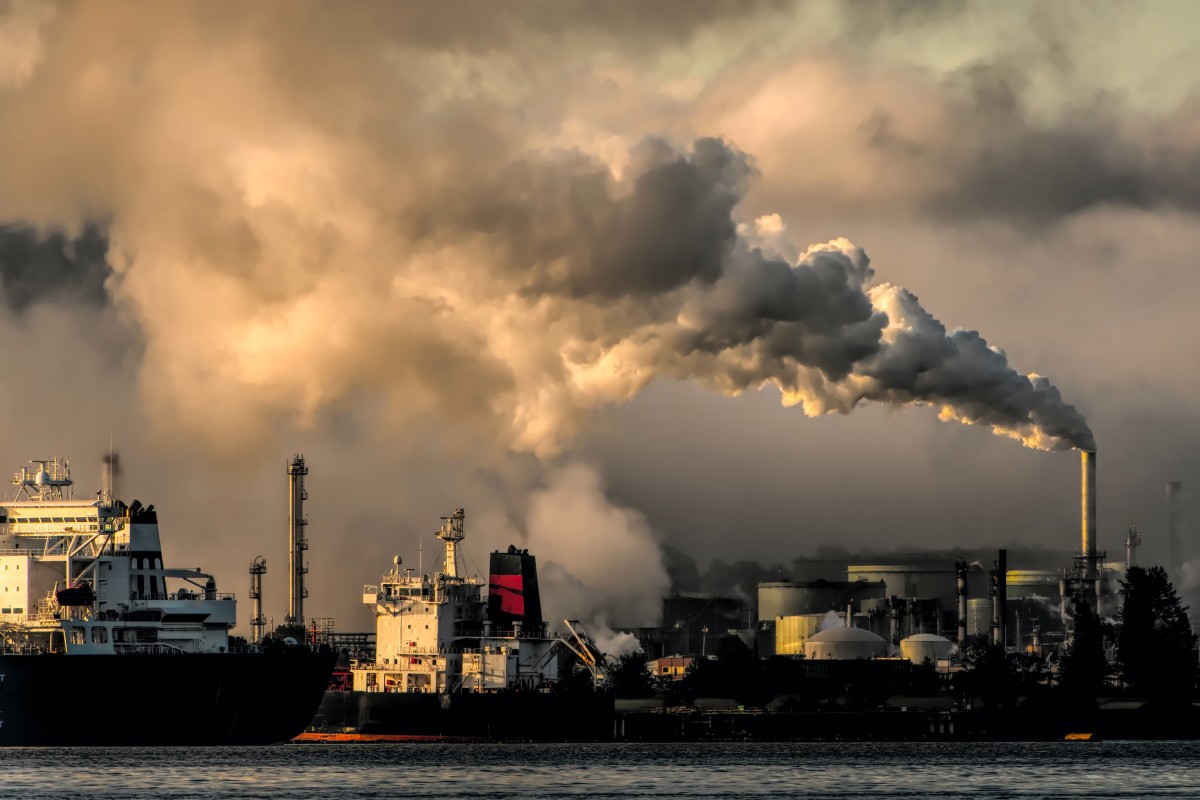
The Role of Fossil Fuels in Air Pollution
The burning of fossil fuels, namely coal, oil, and natural gas, is a significant source of air pollution. Power plants, industrial processes, and residential heating systems that use these fuels emit substantial amounts of pollutants such as sulfur dioxide, nitrogen oxides, particulate matter, and carbon dioxide. These substances can degrade air quality, pose health risks, and contribute to climate change.
Transitioning to Renewable Energy Sources
A shift towards renewable energy sources presents a viable solution to curbing air pollution from energy production. Solar, wind, hydro, and geothermal power can provide electricity with minimal emissions. As the cost of these technologies continues to fall, they are becoming an increasingly attractive and feasible alternative to fossil fuels.
Renewable energy sources not only improve air quality but also offer additional benefits such as energy security, job creation, and mitigation of climate change. However, the transition requires strategic planning, technological innovation, and policy support.
Energy Efficiency as a Key Solution
Improving energy efficiency is another critical aspect of reducing air pollution. Energy-efficient buildings, appliances, and vehicles require less energy, and therefore result in fewer emissions. Efficiency can be promoted through stringent standards, incentives for energy-saving technologies, and public awareness campaigns.
Moreover, energy efficiency can also bring cost savings, making it a win-win solution for both the environment and the economy. While each individual action might seem small, the cumulative effect of energy efficiency measures can have a profound impact on air quality.
As we consider sustainable solutions for air pollution, it is clear that transforming our energy systems is not only desirable but also necessary. By reducing our reliance on fossil fuels and improving energy efficiency, we can take significant strides towards better air quality, healthier communities, and a more sustainable future.
Green Urban Planning: Cities of the Future
Green urban planning, focusing on sustainable, clean, and eco-friendly strategies, is increasingly recognized as a crucial component in the fight against air pollution. In this section, we will delve into how green spaces contribute to air quality, discuss the importance of sustainable city design, and look at some case studies of cities leading the way in green urban planning.

Green Spaces and Air Quality
Green spaces are a critical part of any urban ecosystem. Not only do they offer recreational opportunities and enhance the aesthetic appeal of cities, but they also significantly contribute to air quality. Trees and vegetation act as natural air filters, absorbing pollutants like nitrogen dioxide and particulate matter, while releasing oxygen. Green spaces also help reduce heat in cities, indirectly contributing to lower emissions from energy used for cooling.
Sustainable City Design for Better Air Quality
When it comes to city design, sustainability should be a priority. Sustainable urban design integrates environmental considerations into all aspects of urban planning, from the selection of building materials to the design of public transportation systems.
One key aspect is promoting ‘compact’ city design, where homes, workplaces, shops, and recreational facilities are close together, encouraging walking, cycling, or public transport use over private cars. Reducing vehicle use directly results in fewer emissions and better air quality.
Other aspects include optimizing energy use in buildings, reducing waste, and fostering local, renewable energy production. All these measures combined can significantly contribute to improved air quality in urban areas.
Case Studies of Green Urban Planning
Several cities worldwide have taken bold steps towards green urban planning. For instance, Copenhagen, known for its bike-friendly streets and renewable energy commitment, aims to become carbon neutral by 2025. The city’s robust bicycle infrastructure has significantly reduced car dependence, improving air quality.
Singapore, known as the “Garden City,” integrates green spaces into all aspects of its urban design, from tree-lined streets to rooftop gardens on its skyscrapers. This green coverage helps absorb pollutants and improve the city’s air quality.
These case studies underline the potential of green urban planning in creating sustainable cities with cleaner air. They serve as inspiration and models for other cities striving to improve their air quality.
As we continue to urbanize at an unprecedented rate, it’s evident that our approach to city planning needs a green transformation. By integrating sustainability into every aspect of urban design, we can create cities that not only have cleaner air but also contribute to a healthier planet and happier citizens.
Policy Interventions and Global Cooperation
Addressing air pollution, both indoors and outdoors, is a complex issue requiring active intervention at different levels. From establishing robust policies and regulations to encouraging public participation, the path to cleaner air involves multiple stakeholders working together. In this section, we will discuss the necessity for stronger air quality regulations, the impact of global agreements, and the importance of public participation in improving air quality.
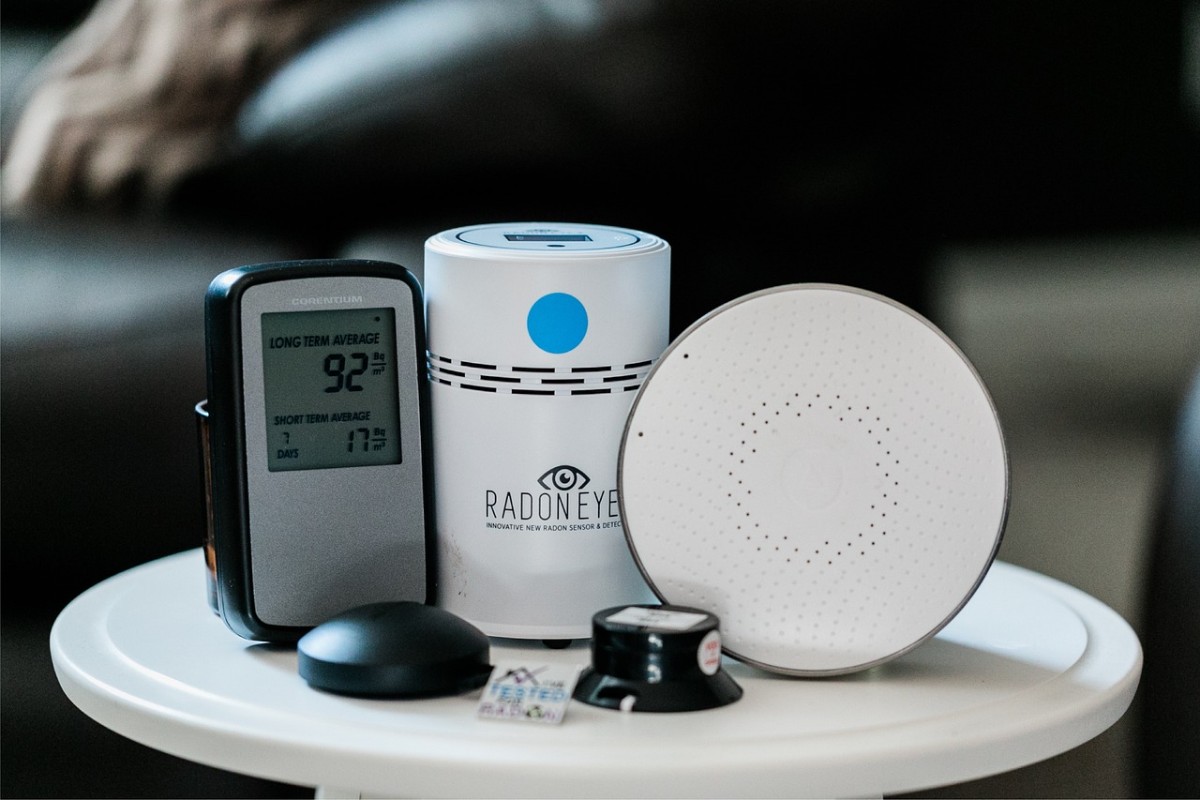
The Need for Stronger Air Quality Regulations
Strong air quality regulations are the backbone of any effective strategy to combat air pollution. Government regulations, standards, and guidelines, when strictly enforced, can drastically reduce emissions from major sources like industries, power plants, and vehicles.
Regulations could include setting emission limits, mandating the use of cleaner fuels and technologies, implementing stringent vehicle emission standards, and imposing penalties for non-compliance. Such measures, while requiring significant effort and investment, yield long-term benefits in terms of cleaner air and improved public health.
Global Agreements and their Impact
Air pollution knows no borders. Pollutants emitted in one country can affect air quality in another. Therefore, tackling air pollution requires global cooperation and action. International agreements like the Paris Agreement, which aims to limit global warming and reduce greenhouse gas emissions, play a critical role in this regard.
Furthermore, initiatives like the BreatheLife campaign by the World Health Organization (WHO), the United Nations Environment Programme (UNEP), and the Climate and Clean Air Coalition (CCAC) work towards mobilizing cities and individuals to improve air quality.
Despite these efforts, there is still a need for more comprehensive and binding global agreements specifically focused on air pollution to ensure a broader and more committed global response.
Encouraging Public Participation in Air Quality Improvement
Public participation is another essential aspect of improving air quality. Individuals can contribute to reducing air pollution in numerous ways - by opting for public transport, cycling, or walking instead of using private cars, by minimizing the use of air conditioning, or by choosing energy-efficient appliances.
Public support and participation can also significantly influence policy-making. Active involvement in local community actions, advocating for stronger air pollution regulations, and raising awareness about air pollution and its impacts are all actions individuals can take.
In conclusion, addressing air pollution requires concerted efforts from policymakers, industries, communities, and individuals alike. By establishing stronger regulations, fostering global cooperation, and encouraging public participation, we can hope to achieve the goal of clean air for all. This not only improves our health and well-being but also contributes to the larger goal of environmental sustainability.
Conclusion
As we come to the end of this discussion on air pollution, we find ourselves looking back at the various complexities that surround this issue and forward to the promise of sustainable solutions. The importance of addressing air pollution and improving air quality cannot be overstated, for it directly impacts our health, the environment, and the very future of our planet.

Recap of the Importance of Addressing Air Pollution
From our living rooms to the air above our cities, air pollution is a pervasive problem. It leads to severe health issues, contributes to climate change, and has far-reaching environmental impacts. Understanding the different types and sources of air pollutants, whether they originate from our homes, industries, transport systems, or energy production, underscores the need for effective and sustainable solutions.
The Promise of Sustainable Solutions for Better Air Quality
Throughout this blog post, we have explored multiple sustainable solutions to improve indoor and outdoor air quality. These include improving ventilation and reducing pollutants at home, adopting sustainable transport alternatives, transitioning to renewable energy sources, and promoting green urban planning. At the heart of these solutions lies the idea of sustainability, focusing on long-term changes that balance our needs with the health of our planet.
We’ve also explored the crucial role that industry, policy, and public participation play in combatting air pollution. Whether it’s through stricter industrial emissions regulations, global cooperation, or personal actions, each element plays a part in the fight for cleaner air.
Final Thoughts and Encouragement for Personal Actions
In conclusion, it’s clear that improving air quality and reducing air pollution is a shared responsibility. While policy changes and industry practices are vital, personal actions also have a substantial impact. Simple actions like choosing public transportation over private vehicles, using energy-efficient appliances, and advocating for clean air policies in our communities can collectively make a significant difference.
As we look to the future, let’s remember that each of us has a role to play in creating a world with cleaner air. Let this blog post serve not just as a source of information, but also a call to action. Together, we can breathe life back into our cities, our homes, and our planet.
Thank you for taking the time to educate yourself about this critical issue. It’s now time to use this knowledge to inform action - for our health, our communities, and our planet.

